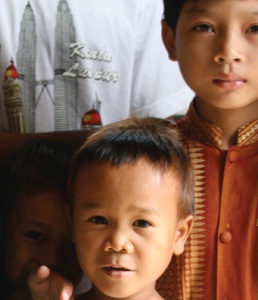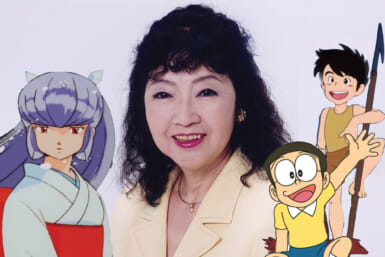by Kit Pancoast Nagamura
As the year closes and indigo evenings grow chilly, it’s time to follow two universal year-end urges (aside from partying and hibernation, I mean): One, to check over the annual balance sheet of what we’ve each personally accomplished in the past twelve months; two, to share comfort and joy.
A brilliant way to satisfy both—to end the year on a positive note and prove that the spirit of giving can transcend tinselly commercialism—is to donate time or yen to a trusted charity.
I’m makin’ a list, and checkin’ it twice, but there’s simply no way to fit all the local organizations in a single article. So I’ll just hang a stocking’s worth in the sidebar as a starting point.
Before you smash your piggy bank, it helps to ask yourself a few questions: Do you want to make an extended commitment, or would a one-time financial donation be more amenable? Would you prefer to be anonymous, or receive public acknowledgement for your generosity? Do you require a full account of how your donation is used, or just a receipt to file with taxes? Finally, would you rather just write a check, or purchase items or services that donate a percentage of profits to charities, or are you the elbow grease type?
Assessing your aspirations honestly from the outset and communicating them clearly to the organization will help you both determine if their needs match up with your intentions. You don’t want to emulate the confused soul who sent winter jackets to assist tsunami victims in Thailand.
Next, you should research the charities that attract your attention. Some carry religious, political, or product affiliations; some are tightly structured and others far more casual; some aim for immediate or short-term assistance, others a protracted agreement. Gather as much information as possible from the getgo to ensure that what you’re prepared to offer will be handled in a way that makes you comfortable.
Krisher’s Cambodia Schools project was designed to help the country rebuild its basic infrastructure, ravaged by Pol Pot’s 1970s Khmer Rouge regime. Doctors, teachers, artists—essentially an entire generation of educated citizens—were wiped out by the regime. Krisher was quick to understand that if Cambodians were to survive in the modern world, they would need to regain a trust in education, and begin studying pronto.
In Krisher’s organization, I found the elements I look for in a charity: leadership, ingenuity, flexibility, a happy and diverse volunteer base and a promise of continuity.
American Aid in Cambodia (AAfc) and Japan Relief for Cambodia (JRfc) has leadership in spades. Former Newsweek journalist Krisher is dedicated to the cause, media-savvy, and undeniably pushy when he needs to be, but otherwise accessible and perfectly charming. Even Newsweek’s competitor, Time, has dubbed him one of Asia’s Heroes.
Beyond this, Mr. Bernie (as his Cambodian staff call him) is inexhaustibly responsive to the changing needs of the country. For instance, when Krisher noted that girls were posting poor attendance at his rural schools, he realized this was because they were expected to baby-sit, clean the house or work in the fields. Krisher’s response was to set up a program—Girls Be Ambitious—whereby the families of donor-sponsored girls receive a monthly stipend provided the girls managed to have perfect attendance at school. The system teaches girls and their families to equate education with empowerment. A mere ¥14,000 a year secures both a girl’s immediate safety—poverty causes many to fall victim to trafficking rackets—as well as her potential for the future.
Similarly, Krisher saw that top students graduating from rural elementary schools could use further, more challenging educational opportunities. Bright Future Kids, established this fall, is a facility for the most advanced students from around the country. And next door? New Life Orphanage, a home for perfectly healthy children left parentless by HIV/AIDS. The message is clear: Krisher knows that bright kids and children with nothing at all have a world of things to teach each other.
Krisher’s outfit offers a way for all ages and budgets to participate. If you really are a piggy-banker, for instance, a mere ¥600 from your stash could protect three lives with anti-malarial mosquito nets. On the other end of spectrum, you could create and name a school after your mom—talk about a lasting seasonal gift! The basic package runs about ¥1.5 million ($13,000), with optional add-ons such as an English teacher, solar panels to power a computer, or even a vegetable garden to supplement the children’s nutrition.
A glance at Krisher’s website reveals a plethora of ways people have worked to find funds for AAfC and JRfC. Some fly to Cambodia, volunteering to help out at various facilities; others purchase sumptuous silk handicrafts, which support a skilled and valuable industry in remote villages (click on VillageLeap). Here in Tokyo, a yoga teacher donates the fees from a class she holds outside her normal hours, children collect one-yen coins in milk cartons, companies put out collections boxes, publishers donate printing, among others. There are as many ways to give as there are generous hearts.
This coming year, you could resolve to lose a stone (ha ha), learn a new language, or get up earlier. But if you yearn for a heavy-hitting, feel-good resolution that outweighs all the others, giving should be your goal. Now you may open your stocking!
Room to Read
Tokyo Director: Susan Lodge
www.roomtoread.org
Kasumisou Foundation
Directors: Barbara and Mark Rosasco
www.kasumisou.org
Asia Initiatives
(Friends of MSSRF in Tokyo)
Director: Geeta Mehta
www.mssrf.org
Run for the Cure
Director: Vicky Paradise Green
www.runforthecure.org
Tokyo English Lifeline (TELL)
Lifeline Services Director: Peter Bernick
www.telljp.com
Tokyo American Club Angel Campaign
Director: Kim Forsythe
www.tokyoamericanclub.org
Baby Tree Project
Director: Koky Saly
www.babytreeprojects.org









